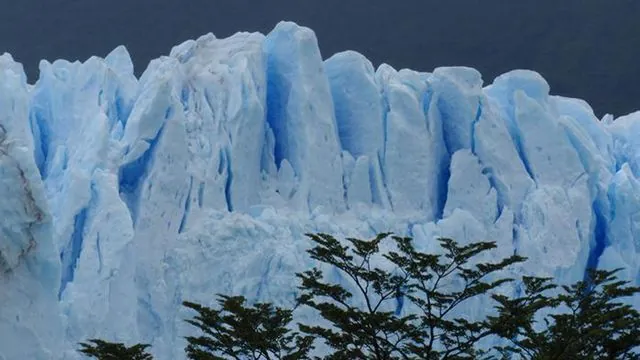
Can Snow Save Patagonia’s Glaciers? A Critical Call to Action Against Climate Change!
2024-11-25
Author: Li
Introduction
As the world grapples with the alarming consequences of climate change, glaciologists have discovered that Southern Patagonia, against the odds, has managed to retain a significant portion of its ice. However, a groundbreaking study published in *Scientific Reports* by INSTAAR postdoctoral researcher Matthias Troch raises concerns about the sustainability of this icy refuge unless urgent global action is taken to curb greenhouse gas emissions.
Historical Analysis of Glaciers
To understand the dynamics affecting these glaciers, Troch and a team of researchers delved into historical data, using advanced simulations to analyze glacial behavior over the past 6,000 years. They found that, strikingly, it was not temperature but precipitation levels that were the leading cause of glacier fluctuations 76% of the time. In recent years, an increase in snowfall has acted as a buffer, protecting these ice masses against the rising global temperatures.
Research Focus
Focusing on three interconnected glaciers on the wetter, ocean-facing side of the Patagonian range in Southern Chile, Troch's study takes advantage of rich data collected in 2005 by the American research vessel Nathaniel B. Palmer. The sediment core retrieved during that expedition served as a crucial reference point, allowing researchers to validate and refine their models with concrete evidence.
Future Scenarios
Looking forward, the team investigated potential future scenarios based on varying levels of human emissions. If global society were to halt fossil fuel use immediately, would the glaciers remain intact? Conversely, what might occur if emissions continued to rise unchecked? The findings were sobering: while increased snowfall could continue to shield the glaciers from melting if regional warming is limited to 1.5 degrees Celsius above pre-industrial levels, persistent high emissions could see temperatures soar to 2.8 degrees Celsius by the century's end—an alarming trajectory.
Call for Action
"The study underscores the need for deep emission cuts to protect glaciers, crucial for limiting future global sea-level rise," warned Troch, emphasizing the significant risks we face if action isn’t taken.
Impact of Climate Change
The researchers also painted a bleak picture of the repercussions of ignoring this call. A shift towards a warmer, wetter climate could lead to an explosive rate of glacial melt, potentially triggering a transition from a snow-dominated system to one dictated by rain—an alarming transformation for these critical ecosystems.
Conclusion
Troch's team hopes that their research not only raises awareness about the plight of glaciers in Patagonia but serves as a rallying cry for global green initiatives. Despite the daunting news surrounding climate change, Troch believes that if we can drastically reduce emissions, there is still hope for the preservation of these vital maritime glaciers.
Broader Implications
Moreover, Troch is hopeful that the insights gained from studying Patagonia's glaciers will inspire similar examinations of maritime glaciers worldwide, including those in Norway, Alaska, Iceland, and New Zealand. The findings here may have broader implications for understanding glacial dynamics in a changing climate.
A Critical Moment for Action
As our planet stands on the brink of irreversible change, the fate of Patagonia's glaciers symbolizes a much larger battle against climate change. It’s a critical moment for global leaders and citizens alike to take definitive actions that could seal the fate of our planet's precious ice reserves. Will you join the fight?




 Brasil (PT)
Brasil (PT)
 Canada (EN)
Canada (EN)
 Chile (ES)
Chile (ES)
 España (ES)
España (ES)
 France (FR)
France (FR)
 Hong Kong (EN)
Hong Kong (EN)
 Italia (IT)
Italia (IT)
 日本 (JA)
日本 (JA)
 Magyarország (HU)
Magyarország (HU)
 Norge (NO)
Norge (NO)
 Polska (PL)
Polska (PL)
 Schweiz (DE)
Schweiz (DE)
 Singapore (EN)
Singapore (EN)
 Sverige (SV)
Sverige (SV)
 Suomi (FI)
Suomi (FI)
 Türkiye (TR)
Türkiye (TR)